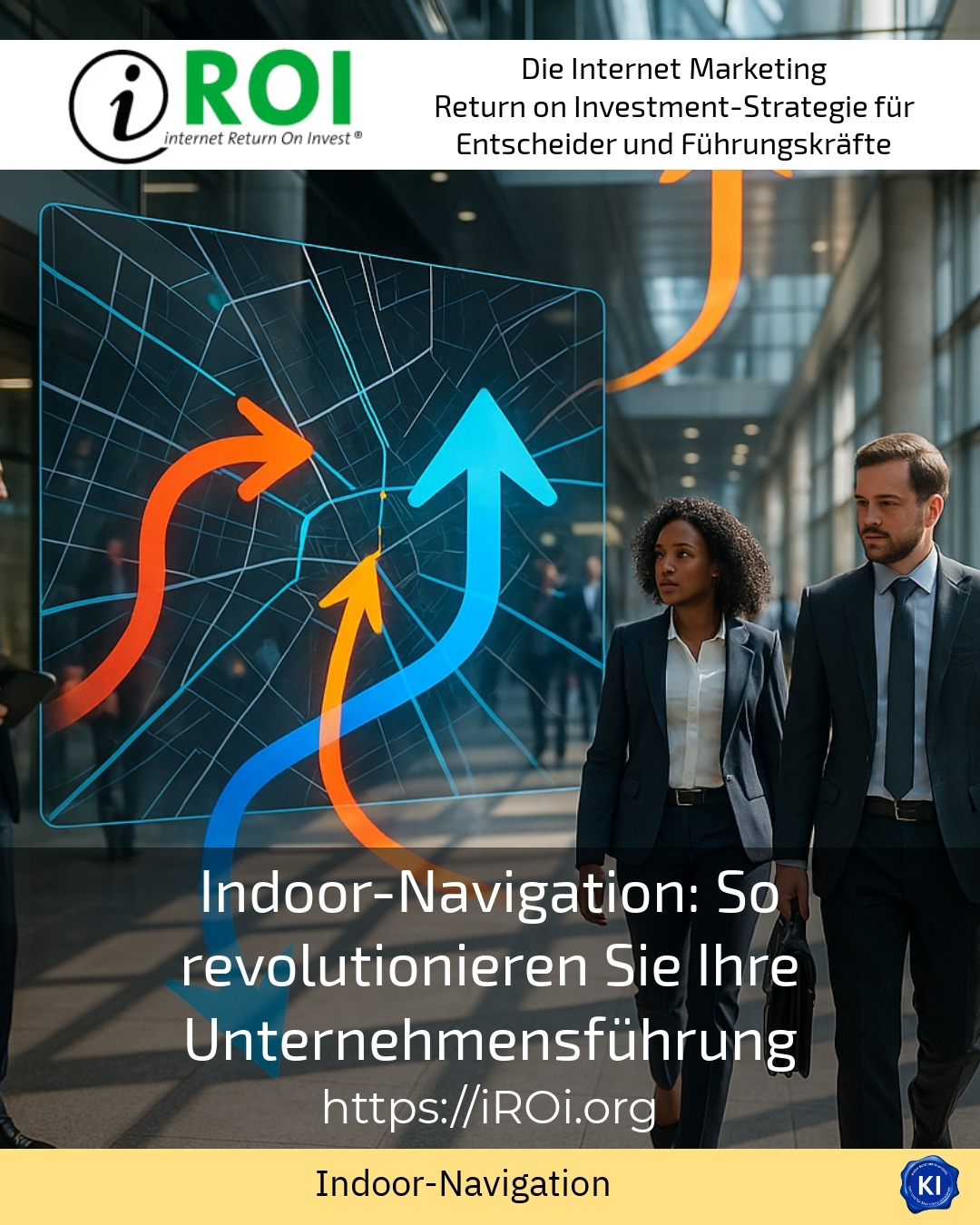Indoor navigation is an advanced technology that helps companies to improve orientation and navigation in complex buildings. This technology uses various localisation technologies such as WLAN, Bluetooth beacons or even optical markers to enable precise positioning and routing within buildings. Especially in large facilities such as airports, shopping centres or hospitals, indoor navigation is proving to be an indispensable solution for the navigation and orientation of visitors [1][4].
How does indoor navigation work?
The way indoor navigation works is based on a combination of different technologies to determine a user's location in real time. One of the most commonly used technologies is Bluetooth Low Energy (BLE) beacons, which regularly emit signals that are then received and analysed by smartphones or tablets. This analysis makes it possible to position the user on a digital map and provide them with precise directions [2][5].
Another approach is the use of optical markers that are recognised by the camera of a mobile device. This technology makes it possible to determine the user's orientation in addition to their position, which is particularly useful in complex buildings with multiple levels [6].
Areas of application for indoor navigation
Indoor navigation has become established in various industries in order to optimise the user experience:
- Airports and railway stations**: Indoor navigation helps you find departure or arrival gates, security checkpoints or other important points.
- Shopping centres**: Visitors can search for specific shops or services and receive additional information about offers or discounts.
- Hospitals**: This technology helps patients and visitors to find their way around complex building structures and quickly reach important areas such as waiting rooms or laboratories [1][4].
Use in museums and galleries
In museums and galleries, indoor navigation can offer added value by allowing visitors to navigate through exhibitions and learn more about the exhibits. They can also receive up-to-date information about events or special exhibitions.
BEST PRACTICE with one customer (name hidden due to NDA contract)An indoor navigation system was introduced in a large museum that not only guides visitors through the exhibitions, but also provides them with information about the exhibits and the background to the works of art. This has not only increased visitor satisfaction, but also extended the time visitors spend in the museum.
Advantages and challenges of indoor navigation
Advantages for users
Indoor navigation offers numerous advantages for users:
- Precise routing**: Especially in complex buildings, where GPS often fails, indoor navigation offers reliable navigation.
- Easier orientation**: Users can find their way around buildings quickly and easily, improving the overall experience.
- Additional information**: Users receive up-to-date information about points of interest (POIs), such as opening hours or special offers [2][4].
Challenges and technical aspects
Despite the advantages, there are also challenges:
- Technical difficulties**: Signal strengths can vary depending on the building structure, which can lead to inaccuracies.
- Data protection**: The collection of location data requires clear guidelines to ensure user privacy [1][4].
Indoor navigation and smart buildings
Another important area of application is the integration of indoor navigation in smart buildings. This technology not only makes it possible to improve navigation, but also to make the entire infrastructure of a building more intelligent. Smart buildings utilise technologies such as IoT to develop energy-efficient solutions and enhance the user experience through interactive tools [3].
BEST PRACTICE with one customer (name hidden due to NDA contract)A system that combines indoor navigation with energy-efficient solutions was implemented in a smart office. The app not only enables employees to find their way around quickly, but also to monitor and optimise energy consumption in certain areas.
Indoor navigation as part of iROI coaching
Our iROI coaching supports companies in implementing indoor navigation to increase efficiency and user satisfaction. Through careful analysis of requirements and comprehensive planning, companies can develop the right technologies and strategies to optimise their business management.
My analysis
Indoor navigation is a technology that enables companies to revolutionise orientation and navigation in complex buildings. By combining different technologies and strategies, it can not only improve the user experience, but also make the entire infrastructure of a building intelligent. As it is already being used successfully in many industries, indoor navigation is proving to be a key element in supporting and improving business management.
Further links from the text above:
Indoor navigation in smart buildings
Indoor Navigation at the Institute of Cartography and Geoinformatics
For more information and if you have any questions, please contact Contact us or read more blog posts on the topic internet Return on Investment - Marketing here.
















